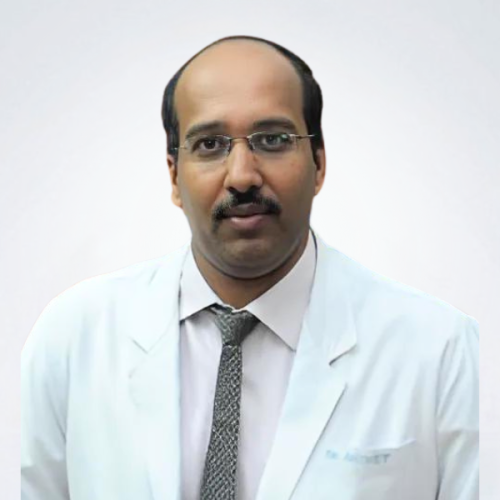Restore Your Vision with Advanced, Painless Cataract Treatment

Cataracts occur when the natural lens of the eye becomes cloudy, leading to blurred vision and, if left untreated, possible blindness. It is the most common cause of treatable blindness worldwide. At M M Joshi Eye Institute, we specialize in cataract surgery, offering cutting-edge technology and expert care to restore clear vision.
World-Class Cataract Surgery Expertise
At M M Joshi Eye Institute, we pride ourselves on delivering exceptional cataract treatment through the phacoemulsification technique—a minimally invasive procedure that ensures optimal results. Our highly skilled surgeons, combined with state-of-the-art equipment, make us a leading destination for cataract surgery.
Why Choose Us for Your Cataract Surgery?
Innovative Robotic Cataract Surgery – Blade-Free Precision
M M Joshi Eye Institute is proud to offer Femtosecond Laser-Assisted Cataract Surgery, also known as Robotic Cataract Surgery. This revolutionary technique uses femtosecond lasers to perform surgical steps with unmatched precision and reproducibility, ensuring:
- Greater Accuracy
- Reduced Human Error
- Consistent and Predictable Results
Customizable Lens Options for Improved Vision
We also provide advanced lens options such as Trifocal, Multifocal, and Extended Depth of Focus IOLs, allowing patients to enjoy life without glasses, whether for reading, working on a computer, or using mobile devices.
Cataract Surgeons & Specialists
Why MMJ
FAQs
Cataracts are a clouding of the natural lens of the eye. They develop slowly over time and are a part of ageing in many adults over 60. Cataracts may develop earlier due to genetic factors, certain medications and medical conditions.
An eye care provider can tell you whether a cataract is forming, usually long before you notice any symptoms. Common symptoms include:
- Seeing glare or halos around headlights at night
- Difficulty seeing at night
- Needing more light to read
- Blurry vision that can’t be fixed by changing your glasses or contacts prescription
- Loss of color intensity
- cloudy, fuzzy, foggy or filmy vision
We recommend cataract surgery only when vision problems are impacting daily activities.
The normal process includes:
- Initial consultation: includes checking vision and dilating eyes. The surgeon will discuss all aspects of eye health with the patient and examine the eyes to determine if cataract surgery is the right choice. We will take more precise measurements of your eye and the surgeon will discuss lens options with you.
- Surgery: You are awake throughout the procedure. Drops are used to numb the eye surface for the surgery. The incision is so tiny that it doesn’t need any sutures; it is self-sealing.
- Next-day visit: Surgeon checks that all is well.
- One-weeks later: Final post-operative visit. If having cataract surgery on the second eye, the process begins again.
Yes. We recommend that you eat a good meal before arriving to hospital and bring a snack or bagged lunch.
Patients with cataracts see their world through a yellow tint. It’s just like wearing yellow-tinted (“blue-blocker”) sunglasses. These glasses block colors from the lower end of the color spectrum like blues and violets. When the cataract is removed and replaced with a clear implant, you will see these unfamiliar colors again. This may be much more dramatic for some patients than others, depending on the cataract.
Patients often enjoy a dramatic change in their ability to see light, colors and fine details within 24 hours after surgery. Most people experience no pain and enjoy a rapid recovery. Vision can continue to improve for two weeks.
All lenses generally will improve vision. Vision correction depends on the replacement lens you choose. Many people still need glasses after cataract surgery, most often for reading.
Yes! Most insurance plans cover the cost of cataract surgery.
No, In recent times cataract surgery is considered as minor surgery with surgery time being less than 20min.
One should avoid rubbing of eyes, cleaning with some dirt cloth
3 techniques are described depending on the method of removal of cataract and incision size,
- Extracapsular cataract extraction- was done earlier , where catarct was extracted by creating large incision on eye following suturing.
- Small incision cataract surgery- its modernized vesrion of above procedure, while incision are made in self sealing fashion and thus sutures are not required.
- Phacoemulsification- most advanced and newer type, where cataract are removed by placing very small incision which do not require sutures and nuclues will be removed using ultrasound enery by phaco machine .
While no complete bed rest is required, doctors advise for a compulsory rest for at least 24 hours followed by as much rest to the eyes as possible. While one needs to ensure regular use of the medications and eye drops, one needs to restrict watching TV, using swimming pools, hot tubs,and activities that can get dust, dirt, or grit in your eyes for at least a few weeks. one also needs to protect your eyes from sunlight and bright indoor light.
While there is no limiting restrictions on lifting, except for patients who has pre existing retinal problem, bending your head in the process of lifting weights or objects within a week of surgery, may hamper the recovery process.
Watching TV in moderation is permissable but, because of the mild discomfort and watering, one needs to give at least a week’s rest to the eye which underwent cataract surgery.
One can regain clear vision after 24-48 hours . The vision steadily improves after 4-8 weeks.
Depending on the type of intraocular lens (either monofocal or multifocal) used in your eye during a cataract surgery, it will reduce the dependency on glasses or will eliminate the need for glasses.
Immediately after a cataract surgery , it is not advisable to drive because of the blurred vision. However, after 24-48 hrs, as the vision clears, one can drive around.
Routine cataract surgery will take only around 15-20minutes for the entire procedure. However, the monitoring period is an hour.
Anaesthetic eye drop is applied to your eyes before the surgery. When you blink, the drops spread over your eye, numbing the surface. Once these anesthetic eye drop completely numbs the eye, an instrument will be used to hold your eye open while the procedure is completed. This instrument ensures that you will not blink during cataract surgery.
No. cataracts cannot grow back because the natural lens are removed and replaced. A secondary cataract that can happen is the clouding of the posterior capsule of the eye.
Yes. A successful cataract surgery is one where the cloudy natural lens of the eye is removed and an artificial intraocular lens is implanrted in its place. These IOL’s are inert and stays for lifetime in the eye and acts like a normal lens for the rest of life.






